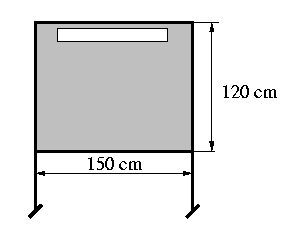Instructions for the Preparation of Posters
The information on your poster should be simple, brief and
intelligible even in the absence of the author(s).
The contents, for example, could be divided into four sections:
- SUMMARY
- INTRODUCTION
- RESULTS
- DISCUSSION
The SUMMARY could list the pertinent results and conclusions.
The INTRODUCTION could state the purpose of the study in
relation to previous work in the field. The RESULTS could
indicate the most important findings.
In general, as few results as possible, i.e. just those necessary
to validate the conclusions, should be shown. A poster overloaded
with findings will rarely attract attention. The DISCUSSION
could give the interpretation and the significance of the results.
There is no obligation to fill the entire space available with
information.
 |
A single board 150 cm wide x 120 cm high (i.e., approx. 59"
wide x 47" high) will be assigned for each poster. Each poster
will have an identification number which will be prepared and put
in place by the organizers. The headings, showing the title,
the author(s) and affiliation(s), should be mounted as indicated
in the drawing which follows. It is very important to plan carefully
the optimal utilization of the remaining poster space. Each figure or
table should have a simple legend.
|
The posters should be readable from a distance of 1 metre (3'3").
Each poster must have a top label indicating the title of the paper,
the name(s) of the author(s) and their affiliation(s). The size of
the characters must be at least 2.5 cm (1") in height. Posters will
be attached to the boards by pins which will be supplied by the organizers.
There will be three poster sessions. Authors should mount their
material on the assigned board at least two hours prior to their
poster presentation and take down their poster by lunchtime
of the following day. Authors should be in attendance throughout
the period they have been assigned for their poster presentation.
Instructions for Authors Contents
